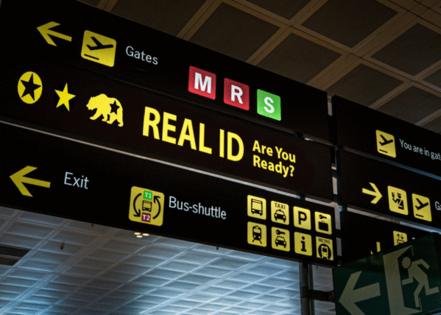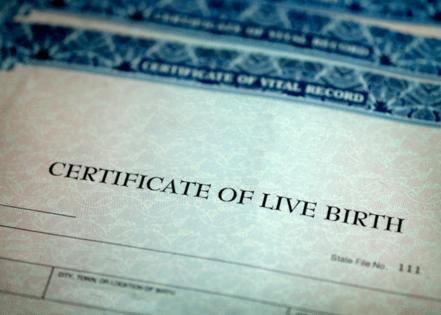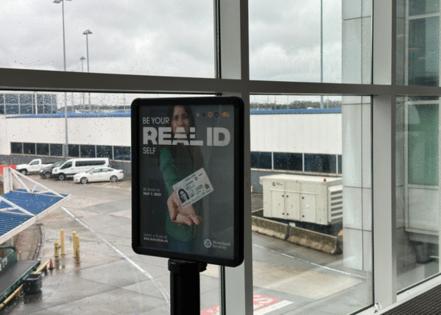As the Real ID deadline looms, will middle names create complications in a digitized system?
Published in Slideshow World
Subscribe
As the Real ID deadline looms, will middle names create complications in a digitized system?
If you're headed to the airport soon, you might want to double-check your identification. Starting May 7, 2025, every resident (18 years or older) of a U.S. state or territory attempting to board a commercial aircraft will need to present security with a Real ID license or identification card, or another acceptable form of identification such as a passport. If you're not able to present a Real ID-compliant card to a Transportation Security Administration agent, you won't be permitted through the airport's security checkpoint.
Why the sudden change? Actually, this new requirement has been 20 years in the making. In 2005, congress passed the Real ID Act, which enacted the 9/11 Commission's recommendation that the federal government "set standards for the issuance of sources of identification, such as driver's licenses." After numerous delays, the act is a way to raise the minimum national standard of security, preventing access to certain federal facilities, commercial aircraft, and nuclear power plants unless you have an enhanced, state-issued license or identification card.
In a recent interview with Axios, a TSA spokesperson explained that travelers who don't possess a Real ID by the deadline are highly encouraged to bring their passport or another accepted document with them when flying domestically. Still, it's likely some travelers will forget to bring them, and the new requirements will lead to longer lines, which is why "TSA also recommends that these passengers arrive a little earlier than normal to allow time for the identity verification process."
Arriving in an era of enhanced and more scrupulous security—a trend that includes contactless, multimodal (face and fingerprint recognition), and machine-learning biometrics—the Real ID's primary purpose is to decrease fraud. As such, all Real ID licenses and cards are typically marked with a star (or encircled star) in the upper right-hand corner, though some states have slight design variations. The Real ID also requires your full legal name, including your middle name, for the purpose of aiding background checks.
These new requirements, however, can provide challenges for people with varied naming structures, specifically when it comes to middle names. Typically attached to one's ethnicity, culture, or marital status, middle name conventions aren't always consistent across different forms of documentation and have caused problems in an increasingly digital world.
In anticipation of the May 7 deadline, Spokeo used research and government resources to explore how these different middle name conventions may complicate the process of getting a Real ID.
Visit thestacker.com for similar lists and stories.
The origins and evolution of middle names and their conventions
It's hard to believe, but middle names weren't always a common part of naming conventions. According to author Stephen Wilson, the custom of giving middle names likely started in 13th-century Italy, where it became common among elites before spreading to other social classes. The majority of the middle names, which took another century to reach the outer countryside, were those of saints, "with the idea that those saints would protect the children who bore their names." The custom soon migrated to France and Spain, then to most of Europe and the early United States by the beginning of the 19th century.
The idea behind them? Experts believe the most prominent reason stems from concerns over lineage and inheritance, and attempts to preserve family or community names. But that's not the case in all countries and cultures. Throughout Hispanic countries, the concept of a middle name doesn't exist. In Spanish culture, people either have one or two given names—like Pedro or José Luis—and two surnames (the first belonging to the father and the second to the mother), a way to honor both lineages. More recently, to avoid confusion with anglophone countries, it's become more popular for Hispanic people in the U.S. to add hyphens between their surnames.
Traditional naming conventions in China and Russia also have their own unique patterns. Chinese names typically consist of three characters, with a single-character surname followed by a one or two-character given name. In some families, children are given the same middle character as a way to identify their generational place in the family. Meanwhile, Russian names have three parts: a first name, a patronymic, and a surname. The patronymic is based on the father's first name (with a suffix that signifies "son of" or "daughter of") and is often used with the first name to represent someone's gender, familial link, and regional background.
Within the U.S., a majority of middle names for girls are monosyllabic. In a 2016 study from now-defunct genealogy site MooseRoots, 7 out of the top 10 girl middle names from the years 2010 through 2015 (the most recently studied years) had only one syllable, while boy names tended to be more traditional (Michael, James, Lee) throughout history. In addition, plenty of parents buck traditions with middle names, opting for ones inspired by pop culture or that imbue certain traits.
Regardless of the convention, women are most likely to have issues squaring away their middle names over various documents. According to the Center for American Progress, an estimated 69 million American women and 4 million men don't have birth certificates that match their current legal name. Whether someone has changed their middle name because of marriage, assimilation, or gender identity, many will face the consequences of new and proposed laws and regulations, like the recent SAVE Act, which would require people to present a passport, birth certificate, or alternative citizenship document when they register to vote or update their voter information. Critics say a voting rights bill like this can discriminate based on discrepancies in identification paperwork, making it even more difficult for married women to vote, reports the 19th.
What to know about getting a Real ID
In order to obtain a Real ID, you'll need to check your state's driver's licensing agency website to determine the exact documents you need. However, according to the Department of Homeland Security, you'll need at minimum documentation showing: full legal name; Social Security number; date of birth; two proofs of address for principal residence; and lawful status.
Still, middle names can make this process more challenging. One of the more common problems can involve married women who have swapped out their middle name for their maiden name. When Concord, New Hampshire, native Patricia Kamel switched her maiden name (Eaton) to her middle name, she ignored the middle name on her birth certificate (Joyce). The new name was accepted by credit cards, banks, and even the DMV, but when she applied for her Real ID in 2019, clerks told her she needed a birth certificate or marriage license that matched those other documents.
That initial requirement has since been relaxed in New Hampshire, but the majority of other states like New Jersey still require secondary document names to match primary ones. The rigidity even provoked a Change.org petition to be posted regarding discrimination against married New Jersey women. For some who now use their maiden name as a middle name and changed their Social Security accordingly, the only option to get a Real ID is to go probate court (a $250 expense) to legally change their full name, or use their birth middle name and change their Social Security name, which won't match any other documents.
There are similar issues that Hispanic people and others without a middle name should consider. Many times, when these recorded names are digitized, U.S. clerks don't grasp the naming conventions and assume the second given name is actually a middle name, or that both last names should be hyphenated. If one's first name is "Juan Pablo," then that should be reflected across all documents, not "Juan" in some and "Pablo" in others.
In any event, it's crucial to have the correct paperwork (or proper changes to it) as you prepare for the nationwide switch. Once you're set with the right documents, the easiest way to get a Real ID is to schedule an appointment at your local DMV. The changes can provide logistical hurdles, but if you follow instructions and make the switch as soon as possible, you may save yourself a lot of time and hassle down the line.
Story editing by Carren Jao. Additional editing by Elisa Huang. Copy editing by Tim Bruns.
This story originally appeared on Spokeo and was produced and distributed in partnership with Stacker Studio.









Comments